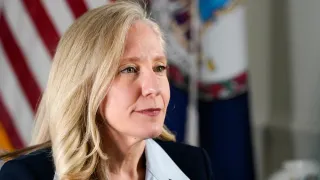February 20, 2016
Santa Clara County, CA, Adopts Plan to End HIV Transmission
Matthew S. Bajko READ TIME: 3 MIN.
Santa Clara County has adopted a four-pronged plan to halt the transmission of HIV within the 15 cities under its jurisdiction.
At its February 9 meeting the Santa Clara County Board of Supervisors approved a "Getting to Zero" initiative developed by the county's public health department. The move had been expected, as the board instructed county health officials in December to devise a strategy for ending the spread of HIV in the South Bay.
"I am proud of the board's unanimous support to provide the resources necessary to make this program a success," gay Supervisor Ken Yeager, who initiated the call for the plan, wrote in an email to constituents last week. "Getting to Zero will build on the existing infrastructure and strong foundation of efforts already underway to reduce HIV transmission and improve outcomes in the county."
Santa Clara's plan is modeled after the one San Francisco health officials adopted two years ago. It calls for supporting persons newly diagnosed with HIV: engaging those living with HIV in high quality care; reducing HIV transmission; and reducing HIV-related stigma.
There are currently 3,480 people with an HIV diagnosis living in Santa Clara County, and an estimated 378 who are infected but not yet aware of their infection, according to a memo from Dr. Sara H. Cody, a health officer and the county's public health director.
"Although tremendous progress has been made in recent decades, HIV/AIDS remains a major health concern," wrote Cody. "After nearly a decade of steady decline, the number of new HIV diagnoses increased by 20 percent between 2013 and 2014, particularly among young Latino men who have sex with men."
Cody outlined four steps the county department will now take to further flesh out the Getting to Zero plan, including conducting community outreach and determining a "backbone organization" to oversee its implementation.
It will also create a steering committee and four to six subcommittees to work on various aspects of the plan, from ensuring access to PrEP for HIV-negative individuals and rapid access to antiretroviral therapy for those newly diagnosed with HIV to retaining people in care.
In her memo, Cody listed a number of fiscal needs the health department estimated it would cost to implement the Getting to Zero plan. The appropriations included $80,000 to hire a consultant to help finalize the plan; either $175,000 per year to hire an outside agency to serve as the backbone group or $157,463 to hire a program manager on the county staff to shepherd the plan; and $132,027 to hire an epidemiologist.
Another $150,000 for fiscal year 2017 would be needed to extend by 12 months an existing contract with a social marketing firm, wrote Cody, with an additional $200,000 to cover the media costs of running four campaigns.
Rather than set aside a total budget amount for the plan's first year, the supervisors directed public health staff to return at a later date with proposed action plans and associated costs for them to consider.
The board did vote last week to create a new HIV/STD controller position with a yearly salary between $146,426.54 and $207,468.30. According to Yeager, the person will help lead the Getting to Zero initiative by serving as a department liaison and representative to communities who bear a disproportionate burden of HIV and STDs.
They will also support the county's STD Clinic, "which is currently understaffed," noted Yeager, and help lead further implementation of the county's LGBTQ Health Assessment.
"This position fills a critical gap in our public health staffing," he wrote.






